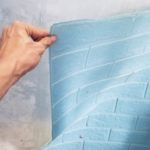Accidentally leaving behind problems or difficult issues for homeowners or subsequent tenants is not uncommon. This not only happens abroad but also in Vietnam. The following story, shared on a Facebook forum with over 400 thousand members, is an example.
Specifically, according to the sharing from the account named Thu H.N, after receiving the house from the previous tenant, she realized that there was a problem with the wall of the house and didn’t know how to solve it. The status update she wrote was as follows: “The previous tenant used foam to stick to the wall. I tried to peel it off to repaint, but how can I remove all this glue? The glue is stuck all over the wall and the window glass.”
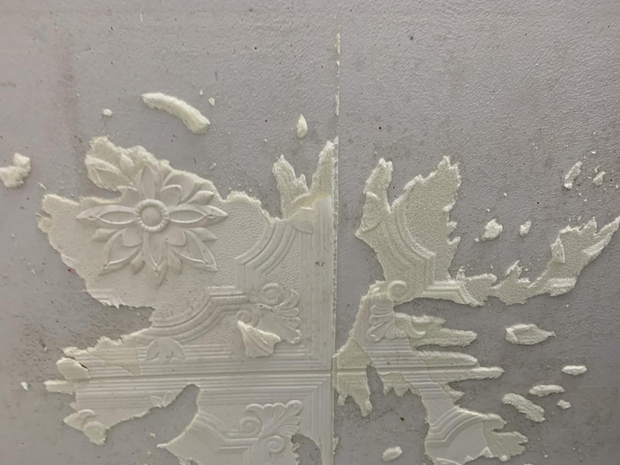
Image of the wall being tightly glued by the foam used for wall insulation shared by the girl with the status update (Photo by Thu H.N – Group Nghiện sạch)
In fact, cases like the story above are quite common. Nowadays, to fix one or more parts of the wall that have peeling paint, dampness, mold, or fading color, many people do not repair and repaint thoroughly. Instead, they use foam or plastic pieces to cover the wall. This is a cheap and easy solution, but it only solves the aesthetic aspect and does not completely address the problem.
Below the shared post, many other users left comments, giving advice on various ways to handle this situation. Three solutions received agreement, verification, and the best effectiveness. The methods include: Using specialized tools to scrape off the glue from the wall and then repaint the entire wall; using perfumed oil, gasoline to wipe, scrub; and using anti-rust spray cans (rp7).
Methods for removing glue from the wall
1. Using specialized tools
The first method is recommended by many, which helps solve the problem of remaining glue on the surface of the wall. This method involves using specialized tools to scrape off the layers of glue. On the market, these tools are accurately called wall cleaning tools, used to clean the surface of walls and glass. Not only do they remove sticky glue, but they also remove paint, cement, lime, gum, or any stubborn dirt stuck on the wall, glass, or floor.
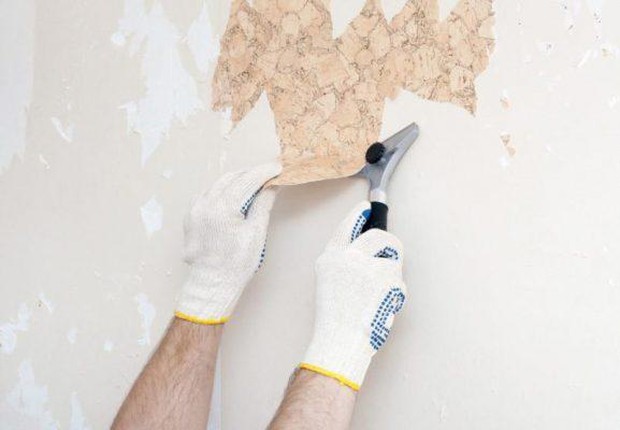
Wall cleaning tools are able to handle sticky residues and dirt on walls and glass (Illustration)
The tool includes a standard scraping blade and a handle, which can be a short or long handle depending on the user’s needs. The standard scraping blade helps effectively remove dirt without damaging or scratching the cleaned surface. However, when using this tool, caution should be taken regarding the force applied. If too light, the dirt may not be completely removed and may take longer. If too strong, it may affect the wall or glass being cleaned.
2. Using strong cleaning solutions
The second method recommended by experienced people is to use strong cleaning solutions, which help soften the glue on the wall or glass and then remove it gradually. Effective solutions can include perfumed gasoline, vinegar, cooking oil, or soap. The steps are to soak a soft cloth with the solution, then continuously rub it on the area to be cleaned.
However, as seen in the shared situation above, the glue is thick and firmly attached, so the most suitable cleaning solution is perfumed gasoline. Perfumed gasoline is also known as Japanese gasoline or industrial banana oil. It is colorless, slow to dissolve in water, and has a characteristic banana smell. Different from regular gasoline, perfumed gasoline is often used to clean dirt due to its strong cleaning ability.
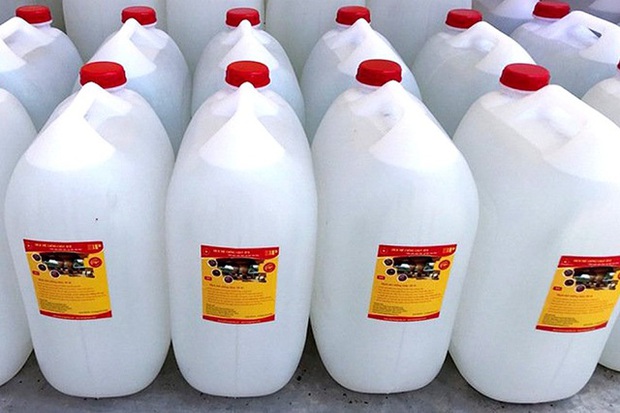
Perfumed gasoline is also an effective method for removing stains on walls (Illustration)
However, perfumed gasoline still carries certain risks to human health, especially when its concentration is high, or when people inhale it for a long time, or when it directly contacts the skin or eyes. Therefore, if you want to use perfumed gasoline to remove stuck glue on the wall or glass, it is recommended to visit pharmacies or stores specializing in cleaning tools to find the most suitable type. When using perfumed gasoline, it is best to wear a mask and gloves.
3. Using rp7 rust preventant spray cans
Finally, using a non-specialized cleaning solution that has a certain degree of effectiveness is using rp7 rust preventant spray cans. Although the main function of this spray can is to protect metal items from corrosion or rust, it has other uses as well.
According to information from distributors, rp7 spray cans can also remove stains and rust on items. It can lubricate metal joints, restart waterlogged engines, etc. However, when using rp7 to remove stains such as stuck glue on walls or glass, caution should be taken, and it should only be applied to small stains.
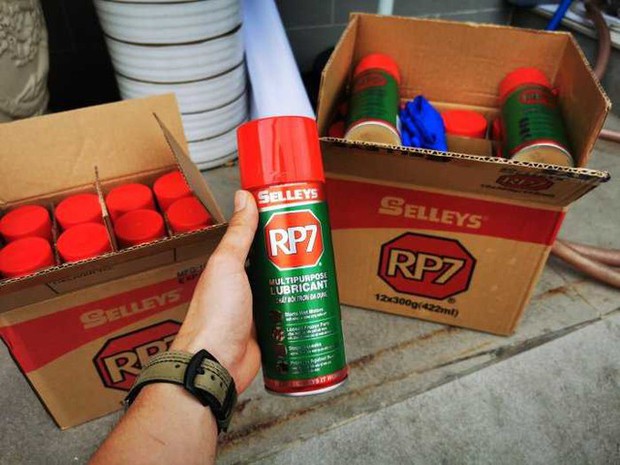
Not only does it protect metal from corrosion, but rp7 spray cans can also remove stains (Illustration)
Due to its relatively high price, around 100,000 VND ($4.35) for a 300g can, it is more expensive compared to other methods. If applied to large stains, it can result in a considerable cost.
Above are some methods that homeowners can apply to clean and remove stuck glue on their walls and glass. If you have no experience in this task, you can seek help from professional cleaning service providers.
How to Cleanly Remove Foam Adhesive from Walls
Fed up of trying to remove stubborn adhesive from your walls? Don’t want to leave any residue behind? This guide has the answer – find out how to easily and efficiently remove wall stickers using foam adhesive!


























